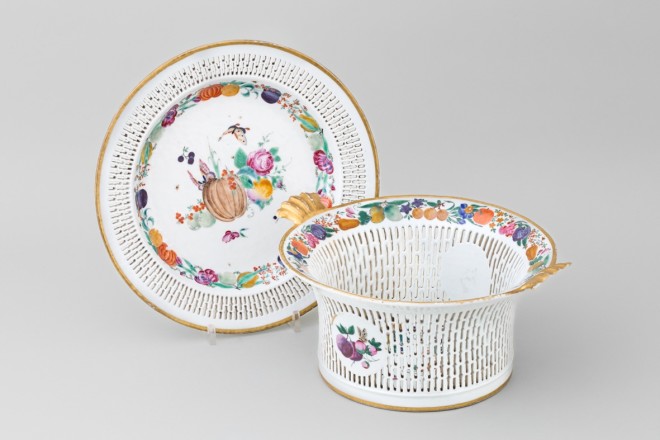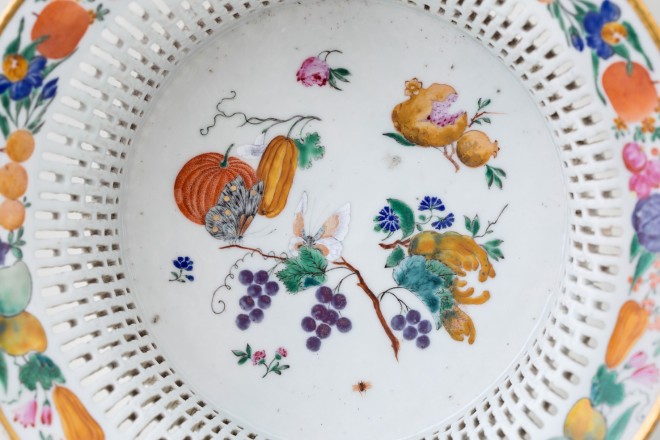AW65
Further images
Of circular form with slightly everted edges and plume-like handles, the sides reticulated except for two round panels, the stand also circular and with reticulated rims, all painted in famille rose enamels and highlighted in gold, the interior of the basket with a central motif of melons, pomegranates, finger-citrus and two finely painted butterflies, one with black wings with gold dots, one with white and light orange wings, both resting on a thin branch of vine with ripe grapes, small flower stems scattered throughout, the inside rim with a band painted with an array of different fruits and flowers in varying colours, the edge of the rim and the plume handles all gilded, on the exterior of the basket the two round panels, one painted with a single flower stem with two flower-heads fruits and little insects, the other with two large purple fruits still on their little branch, a stem of budding pink roses, a butterfly en grisaille and gold perched on one of the buds, around the foot a gilded line, the round stand delicately painted in the centre with fruits still on little branches, different flower-stems, two white fluttering butterflies and little insects, all circled by a border of differently coloured fruits, flowers and pinecones, the rim of the stand similarly reticulated, and its edge highlighted in gold, the base of the basket and the base of the stand both glazed.
Provenance
Yonge family, Puslinch house
Puslinch, near Yealmpton, is a perfect example of an early Georgian country house. Built in the Queen Anne style during the period 1720-1726 for James Yonge, a Plymouth surgeon, it is still in the ownership of the Yonge family today.
Literature
Puslinch, near Yealmpton, is a perfect example of an early Georgian country house. Built in the Queen Anne style during the period 1720-1726 for James Yonge, a Plymouth surgeon, it is still in the ownership of the Yonge family today.






